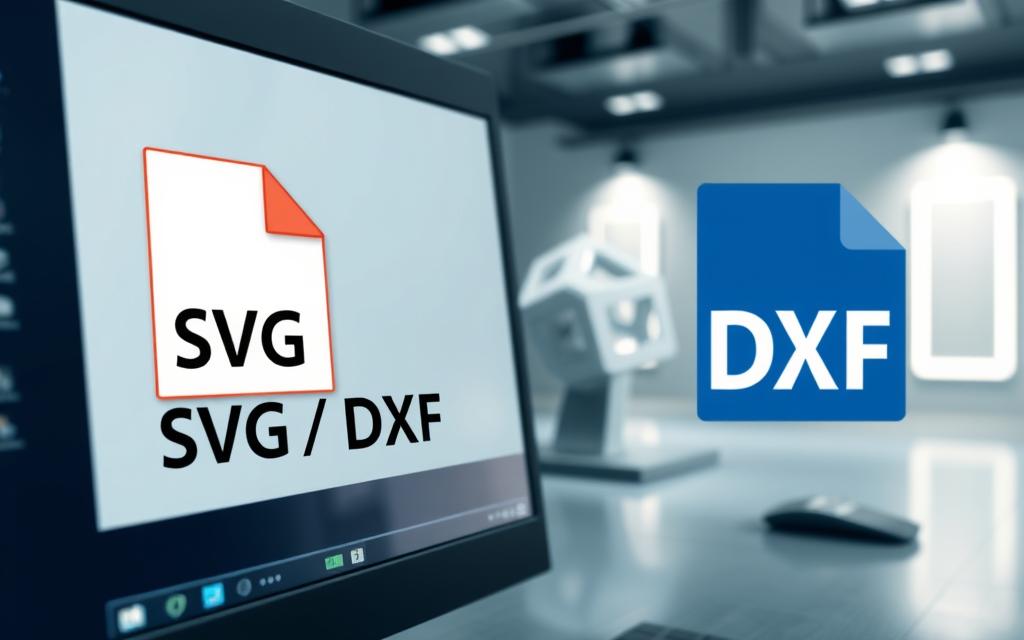Table of Contents
Working with vector designs requires software that supports multiple file formats. The Business Edition of this popular design tool stands out by allowing direct import of Adobe Illustrator (AI) files. This feature saves time and keeps designs crisp for cutting projects.
Lower-tier versions don’t offer the same flexibility. Users often face errors when trying to upload unsupported formats. Converting files to DXF or SVG becomes necessary, which can affect quality.
With the Business Edition, professionals gain seamless workflow integration. Vector-based designs maintain precision, ensuring clean cuts every time. This makes it ideal for sign-making, apparel, and other detailed projects.
Will Silhouette Studio Business Edition Open AI Files?
Professional designers need tools that handle Adobe Illustrator files. The Business Edition delivers this capability, allowing direct import of AI formats without conversion. This preserves design integrity for cutting projects.
Understanding AI File Compatibility
Adobe Illustrator (*AI*) files retain vector paths, which translate to clean cut lines in the software. The Business Edition reads these paths natively, unlike lower-tier versions requiring SVG or DXF conversion.
Note: Older AI versions (CS6) may need updates. CC files work seamlessly. Always check layer structures before importing.
Business Edition vs. Other Silhouette Editions
The Designer Edition lacks native AI support, forcing users to convert files. Basic tiers restrict imports to DXF, often compromising quality. Here’s a quick comparison:
- Business Edition: AI, EPS, CDR support
- Designer Edition: SVG conversion required
- Basic Edition: DXF-only imports
Upgrading to the Business Edition streamlines workflows for sign-making, apparel, and detailed projects. It’s ideal for professionals needing full vector fidelity.
Key Features of Silhouette Studio Business Edition
High-quality cutting projects demand advanced design capabilities. The Business Edition delivers with tools tailored for professionals, ensuring precision and efficiency.

Supported Vector File Formats
This software handles over 15 formats, including:
- AI (Adobe Illustrator)
- EPS (Encapsulated PostScript)
- CDR (CorelDRAW)
- SVG files (Scalable Vector Graphics)
- PDF (Portable Document Format)
Native support eliminates conversion hassles, preserving sharp lines for cutting accuracy.
Advanced Design Tools
Boost productivity with features like:
- Matrix Copy: Duplicate designs in grids for batch projects.
- Weed Line Automation: Simplify vinyl projects with pre-set trim lines.
- Multi-Machine Control: Run multiple cutters simultaneously.
- Tiling: Split large designs across smaller materials seamlessly.
These tools streamline workflows, making the Business Edition ideal for high-volume tasks.
How to Open AI Files in Silhouette Studio Business Edition
Adobe Illustrator users can directly import designs into this advanced cutting tool. The process ensures vector precision, saving time and maintaining quality. Follow these steps to avoid common pitfalls.
Step-by-Step Import Guide
Start by unzipping compressed AI files. The software requires expanded text objects for clean imports. Here’s how:
- In Adobe Illustrator, outline all text using Type > Create Outlines.
- Save the file as .AI (CC version recommended).
- Open the software, select File > Import, and choose your AI file.
For layered designs, group elements by color before importing. This preserves cut lines for vinyl or fabric projects.
Common Import Issues and Fixes
Missing cut lines? Use Illustrator’s Pathfinder tool to unite overlapping paths. Flatten transparent layers to prevent errors.
- Font errors: Convert text to curves in Illustrator.
- Color mismatches: Assign RGB profiles in both programs.
- Layer errors: Simplify complex designs before import.
Note: Avoid converting to DXF file formats unless necessary. Native AI support delivers sharper results.
Why Use AI Files with Silhouette Studio?
Vector-based designs offer unmatched precision for cutting projects. Unlike raster images, they maintain crisp edges at any size. This makes them ideal for software-driven machines that rely on clean paths.

Benefits of Vector Files for Cutting
Vector files use mathematical paths, not pixels. This ensures smooth curves and sharp corners when cutting vinyl or paper. Here’s how they outperform raster formats:
| Vector | Raster | |
|---|---|---|
| Scalability | No quality loss | Blurry when enlarged |
| Editability | Anchor points adjustable | Fixed pixels |
| Cut Precision | Perfect lines | Jagged edges |
For multi-material projects, vectors allow color-layer separation. Assign different cut lines to each hue—ideal for layered decals or fabric appliqués.
Design Flexibility
Editable paths let designers tweak shapes without redrawing. Need to resize a wall decal? Adjust anchor points instantly. This design flexibility speeds up revisions.
Commercial users benefit most. Batch-producing intricate paper cuts or signs becomes efficient. No manual fixes for blurred edges—just precise results every time.
Alternative File Formats for Silhouette Studio
Expanding design possibilities means working with multiple file types. While the Business Edition supports AI formats, other versions rely on SVG files or DXF file conversions. Understanding these options ensures smooth project execution.

SVG and DXF Files
SVG files retain layers and colors, ideal for multi-material projects. The format’s scalability makes it perfect for resizing designs without quality loss. For example, vinyl decals keep crisp edges when enlarged.
DXF files focus on cut paths but discard color data. They’re best for single-layer cuts like stencils. Here’s a quick comparison:
| SVG | DXF | |
|---|---|---|
| Layers | Preserved | Merged |
| Colors | RGB/CMYK | None |
| Best For | Multi-layer decals | Single-cut projects |
Converting AI to Compatible Formats
Converting files from AI to SVG or DXF requires attention to detail. Follow these steps for clean results:
- Simplify paths: Reduce anchor points in Illustrator to avoid cut errors.
- Export as SVG: Enable “Preserve Illustrator Editing” for future tweaks.
- Use Inkscape: This free tool batches conversions while keeping layers intact.
For print-cut projects, add bleed areas during conversion. This prevents white edges when trimming. Test imports in silhouette software before finalizing.
Comparing Business Edition to Designer Edition
Choosing the right design tool depends on project needs and workflow demands. The Business Edition and Designer Edition cater to different user levels, offering distinct capabilities for cutting projects.

Feature Differences
Advanced users require more than basic design tools. Here’s how these versions differ:
| Feature | Business Edition | Designer Edition |
|---|---|---|
| AI File Support | Yes | No |
| Multi-Machine Control | 3+ devices | Single device |
| Production Tools | Batch processing | Manual workflows |
| File Formats | 15+ vector types | Limited to SVG/DXF |
| Commercial Use | Unlimited | Personal projects only |
The Business Edition excels in high-volume environments. Features like tiling and weed line automation save hours on complex jobs.
Which Edition Is Right for You?
Hobbyists creating occasional crafts may prefer the Designer Edition. Its simpler interface handles basic vinyl cuts and paper designs well.
Professional sign-makers or apparel businesses should upgrade. The Business Edition pays for itself through:
- Faster project turnaround
- Reduced file conversion time
- Higher precision on commercial jobs
Need to manage multiple cutters? Learn how to optimize your workflow with file compatibility tips for production environments.
Upgrading takes minutes through the software dashboard. Existing projects transfer automatically, preserving all cut files and settings.
Troubleshooting AI File Import Problems
Even with advanced tools, importing designs can sometimes hit snags. The software may show error messages or fail to read certain elements. Knowing how to fix these issues keeps projects on track.
Common Error Messages and Fixes
When files don’t load correctly, the problem often lies in formatting. Here’s how to resolve frequent alerts:
- “Invalid file format”: Ensure the AI file isn’t zipped. Extract it first.
- Anchor point overload: Simplify paths in Illustrator to reduce complexity.
- Missing fonts: Convert text to outlines before saving.
For license activation errors, restart the software and reconnect to the internet. Temporary glitches often clear this way.
Optimizing AI Files for Clean Imports
Prevent issues before they start. Follow these steps for smooth imports:
- Unify overlapping paths using Illustrator’s Pathfinder tool.
- Flatten transparent layers to avoid cut line breaks.
- Check gradients—convert them to solid colors if the cut file skips details.
| Issue | Solution | Tool |
|---|---|---|
| Complex paths | Simplify anchor points | Illustrator’s Simplify Path |
| Layer errors | Merge unnecessary groups | Pathfinder > Unite |
| Color mismatches | Assign RGB profiles | Document Color Mode |
Run the Silhouette Pre-Flight checklist before finalizing designs. It catches hidden issues like stray points or open paths.
Tips for Working with AI Files in Silhouette
Mastering Adobe Illustrator file imports boosts efficiency and precision. Proper setup ensures smooth transitions from design to cutting, saving time and reducing errors.
Preparing Designs in Adobe Illustrator
Start with the right canvas. Match your artboard to Silhouette mat sizes—12″x12″ or 12″x24″ are common. This prevents scaling issues during import.
For clean cut lines, use 0.001pt strokes in Illustrator. Label layers clearly, like “Vinyl-Cut” or “Score-Lines.” Logical naming helps when editing in the cutting software.
- Assign specific colors to die-cut layers for easy identification
- Separate vector and raster elements before exporting
- Embed images at 300dpi for sharp print results
“Test files with the free Silhouette Studio Viewer before finalizing. This catches compatibility issues early.”
Maintaining Cut Lines and Layers
Preserve design integrity during transfers. Export as PDF with vector/raster separation enabled. This keeps editable paths intact while embedding high-res images.
For complex projects:
- Flatten transparent effects in Illustrator
- Convert text to outlines
- Simplify paths with excessive anchor points
Need advanced tips? Explore Business Edition features for professional workflows. The right preparation eliminates 90% of import problems.
Conclusion
For professionals, seamless design workflow matters. The advanced version handles vector formats natively, eliminating conversion steps. This ensures precision for intricate cutting projects.
Upgrading makes sense if you regularly work with layered projects. Batch processing and multi-machine control save hours. Test the free trial to experience these benefits firsthand.
Need alternatives? Free converters like Inkscape transform formats while preserving quality. Always check layer structures before importing to avoid errors.
Ready to optimize your process? Start with sample files to see the difference in output quality. Sharp results begin with the right tools.
FAQ
Can the Business Edition open AI files?
Yes, the Business Edition supports AI files, allowing seamless import from Adobe Illustrator.
What vector formats work with Silhouette Studio?
Besides AI, it supports SVG, DXF, and EPS files, ensuring flexibility for designers.
How do I import an AI file into the software?
Go to File > Open, select your AI file, and adjust cut lines as needed.
Why choose AI files for cutting projects?
Vector files like AI maintain sharp edges and scalability, ideal for precise cuts.
What if my AI file won’t import correctly?
Try saving the file as an SVG or DXF, or check for unsupported effects in Illustrator.
Is the Business Edition better than Designer Edition?
The Business Edition offers advanced features like AI support and enhanced design tools.
How do I preserve cut lines when importing?
Ensure layers and paths are properly labeled in Illustrator before saving the AI file.
Can I edit AI files directly in Silhouette Studio?
Yes, but complex elements may need simplification for optimal cutting results.









